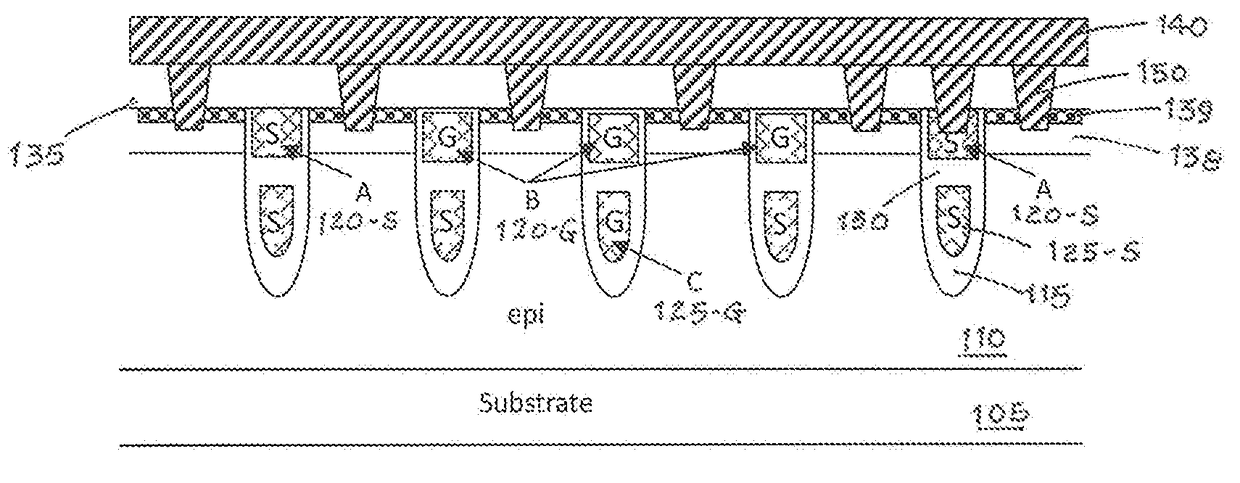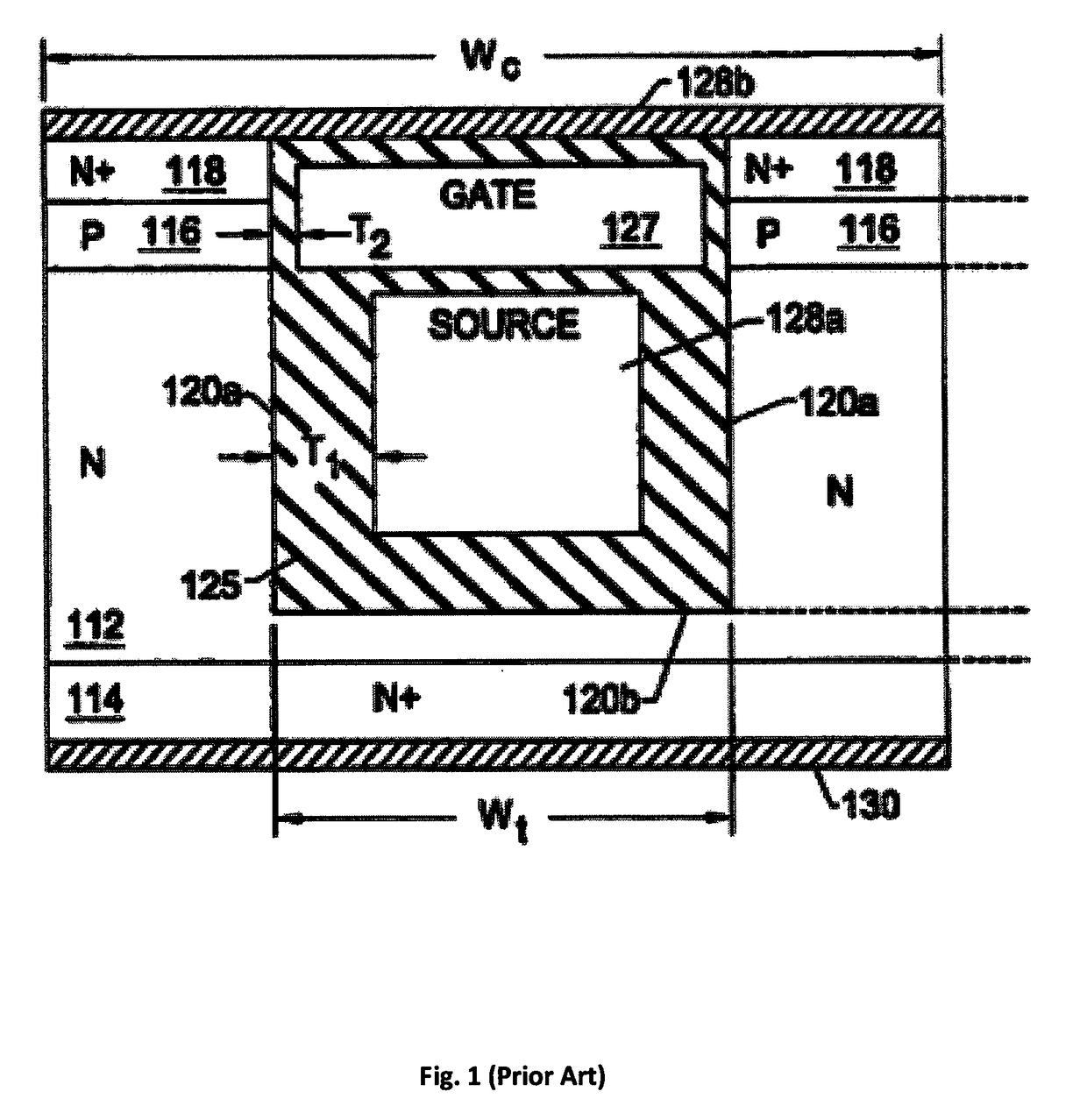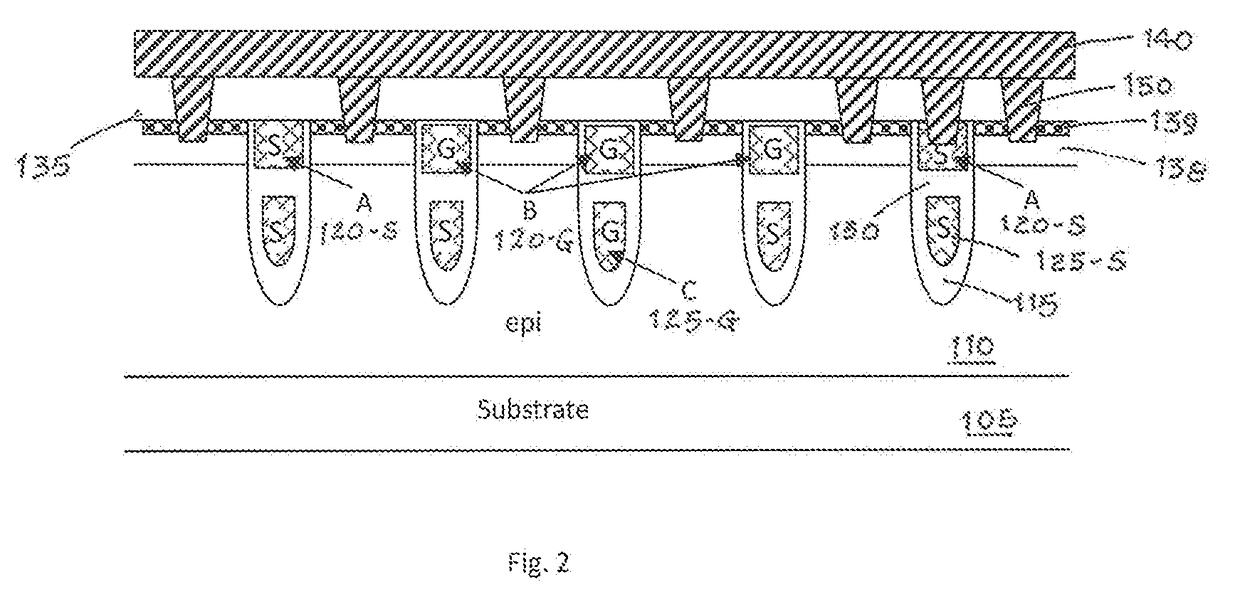Sgt mosfet with adjustable crss and ciss
a technology of mosfet and crss, which is applied in the direction of basic electric elements, electrical apparatus, semiconductor devices, etc., can solve the problems of low crss, high turning, technical limitations, etc., and achieve the effect of flexible adjustment of the connection configuration and reducing the ringing
- Summary
- Abstract
- Description
- Claims
- Application Information
AI Technical Summary
Benefits of technology
Problems solved by technology
Method used
Image
Examples
Embodiment Construction
[0022]Referring to FIG. 2 that shows a cross sectional view of a portion of a shielded gate trench (SGT) MOSFET 100 as an embodiment of this invention. The shielded gate trench (SGT) MOSFET power device 100 as shown is formed in a semiconductor wafer that includes epitaxial layer 110 supported on a heavily doped bottom substrate 105. The epitaxial layer 110 may include one, two or even more doping concentration sublayers. In the active cell area of the device 100 as shown, the device 100 includes a plurality of shield gate trenches 115 padded by a gate oxide layer 118. In each of the shield gate trenches there is a top electrode 120 and bottom electrode 125 shielded by a dielectric layer 130 disposed between the top electrode and the bottom electrode 125. Unlike the conventional shield gate trenches, some of the bottom electrodes 125-S are electrically connected to source and some other bottom electrodes 125-G are electrically connected to gate as that shown in location C in FIG. 2....
PUM
 Login to View More
Login to View More Abstract
Description
Claims
Application Information
 Login to View More
Login to View More - R&D
- Intellectual Property
- Life Sciences
- Materials
- Tech Scout
- Unparalleled Data Quality
- Higher Quality Content
- 60% Fewer Hallucinations
Browse by: Latest US Patents, China's latest patents, Technical Efficacy Thesaurus, Application Domain, Technology Topic, Popular Technical Reports.
© 2025 PatSnap. All rights reserved.Legal|Privacy policy|Modern Slavery Act Transparency Statement|Sitemap|About US| Contact US: help@patsnap.com



